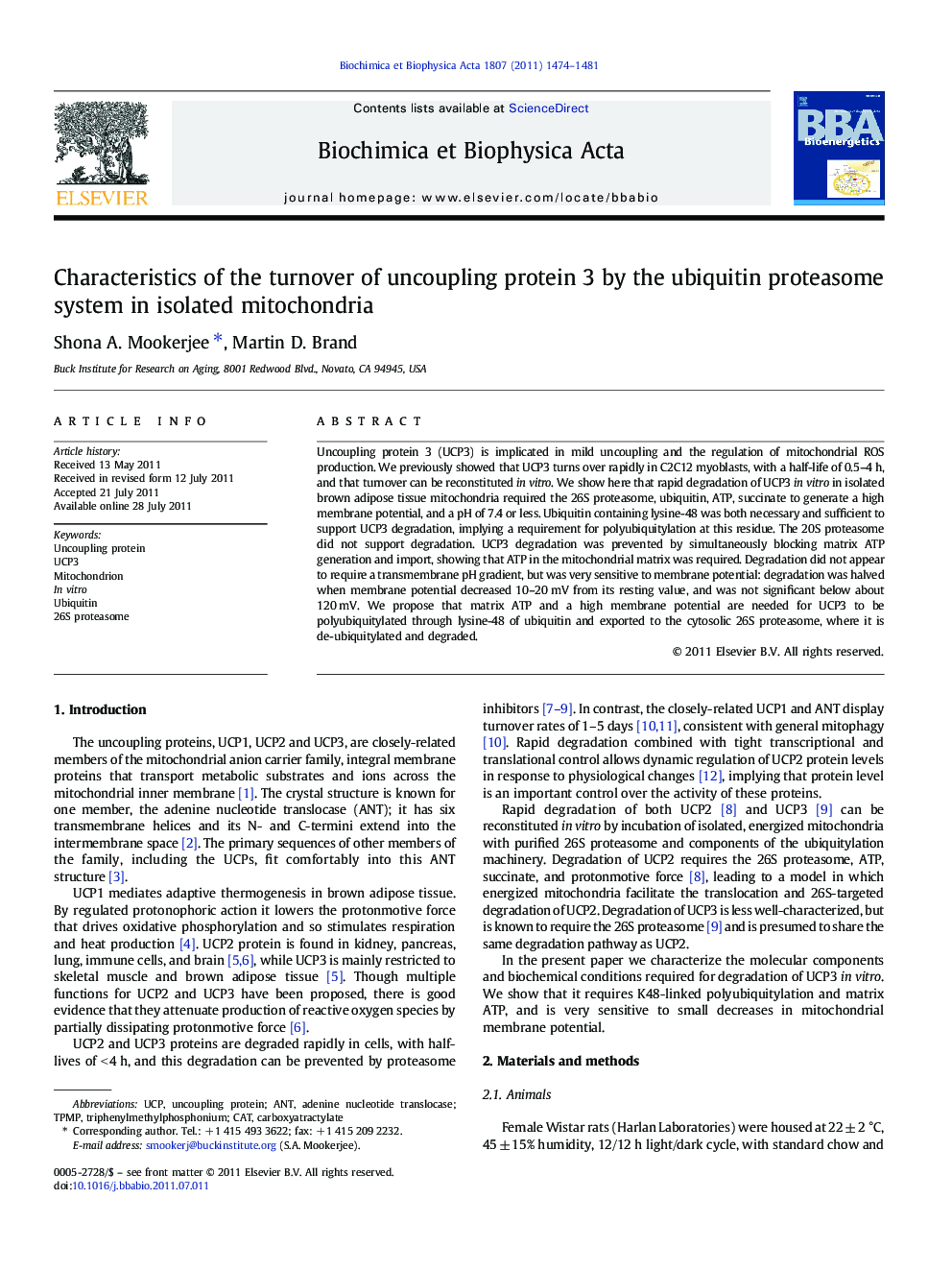| کد مقاله | کد نشریه | سال انتشار | مقاله انگلیسی | نسخه تمام متن |
|---|---|---|---|---|
| 1942615 | 1052619 | 2011 | 8 صفحه PDF | دانلود رایگان |

Uncoupling protein 3 (UCP3) is implicated in mild uncoupling and the regulation of mitochondrial ROS production. We previously showed that UCP3 turns over rapidly in C2C12 myoblasts, with a half-life of 0.5–4 h, and that turnover can be reconstituted in vitro. We show here that rapid degradation of UCP3 in vitro in isolated brown adipose tissue mitochondria required the 26S proteasome, ubiquitin, ATP, succinate to generate a high membrane potential, and a pH of 7.4 or less. Ubiquitin containing lysine-48 was both necessary and sufficient to support UCP3 degradation, implying a requirement for polyubiquitylation at this residue. The 20S proteasome did not support degradation. UCP3 degradation was prevented by simultaneously blocking matrix ATP generation and import, showing that ATP in the mitochondrial matrix was required. Degradation did not appear to require a transmembrane pH gradient, but was very sensitive to membrane potential: degradation was halved when membrane potential decreased 10–20 mV from its resting value, and was not significant below about 120 mV. We propose that matrix ATP and a high membrane potential are needed for UCP3 to be polyubiquitylated through lysine-48 of ubiquitin and exported to the cytosolic 26S proteasome, where it is de-ubiquitylated and degraded.
► The rapid turnover of UCP3 was characterized in vitro.
► UCP3 degradation requires matrix ATP and a high membrane potential.
► K48-linked polyubiquitylation is necessary and sufficient to promote UCP3 degradation.
► UCP3 degradation is highly sensitive to small changes in membrane potential.
Journal: Biochimica et Biophysica Acta (BBA) - Bioenergetics - Volume 1807, Issue 11, November 2011, Pages 1474–1481